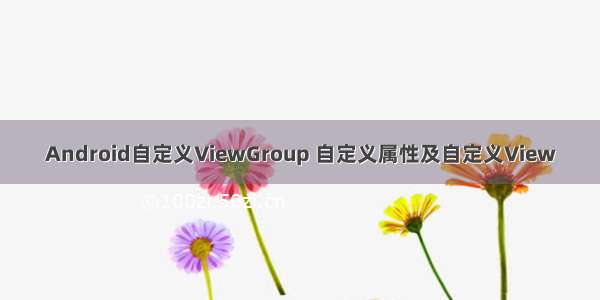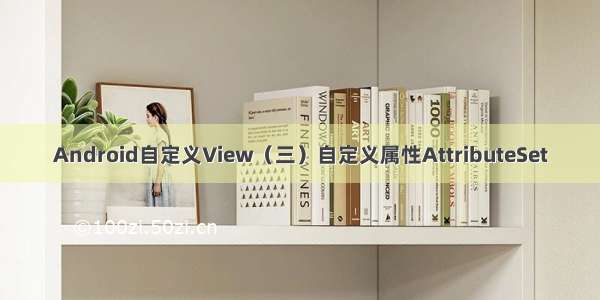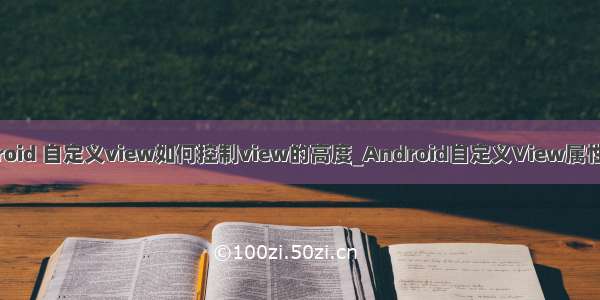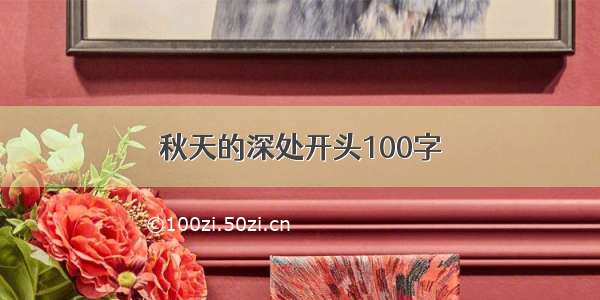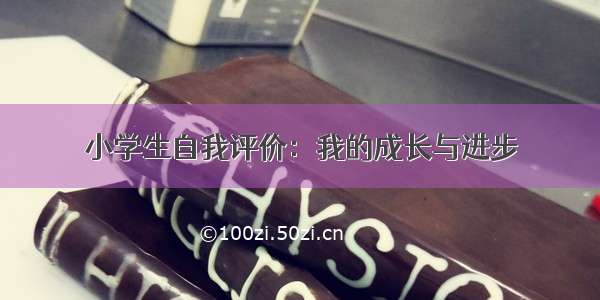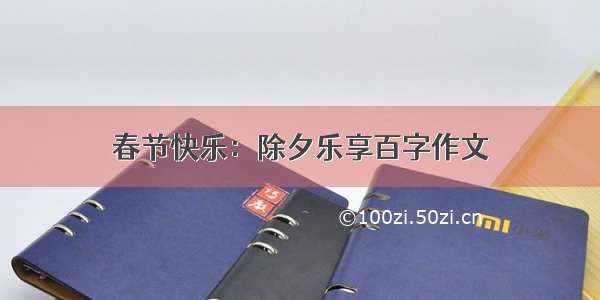
有些时候,自己要在布局文件中重复书写大量的代码来定义一个布局。这是最基本的使用,当然要掌握;但是有些场景都去对应的布局里面写对应的属性,就显得很无力。会发现,系统自带的控件无法满足我们的要求,这个时候就要考虑自定义控件。自定义view的世界,也很浩瀚,个人需要学的地方还有很多很多。自定义view,会节省开发效率,很有必要学习其基本原理和方法。接下来就对自定义view,做一个初步的认识,一步步了解封装的重要性。但是,也仅仅是一个初步,因为它实在太灵活了。
有这么一种场景,看图:
除了布局之外,还有一点。当用户点击的时候,会自动选中复选框,而且红色textview变为绿色。且改变了内容。
那就一点点的看看怎么通过自定义view和自定义属性来完成上述功能。
首先,它是显示在一个活动中的。这个活动,就定位为SettingCenterActivity,要在这个活动中加载上面的的布局。通过以前的方式来完成一下布局上的功能。就使用线性布局,冗余的代码写了出来:
定义一个activity_settingcenter.xml:
<?xml version="1.0" encoding="utf-8"?><LinearLayout xmlns:android="/apk/res/android"android:layout_width="match_parent"android:layout_height="wrap_content"android:orientation="vertical" ><TextViewstyle="@style/tv_title"android:text="设置中心" /><RelativeLayoutandroid:layout_width="match_parent"android:layout_height="wrap_content" ><TextViewandroid:id="@+id/tv_settingcenter_autoupdate_title"android:layout_width="wrap_content"android:layout_height="wrap_content"android:layout_margin="5dp"android:text="自动更新设置"android:textSize="22sp" /><TextViewandroid:id="@+id/tv_settingcenter_autoupdate_content"android:layout_width="wrap_content"android:layout_height="wrap_content"android:layout_below="@id/tv_settingcenter_autoupdate_title"android:layout_margin="5dp"android:text="自动更新已经关闭"android:textSize="22sp" /><CheckBoxandroid:id="@+id/cb_settingcenter_autoupdate_checked"android:layout_width="wrap_content"android:layout_height="wrap_content"android:layout_alignParentRight="true"android:layout_centerVertical="true" /><Viewandroid:layout_below="@id/tv_settingcenter_autoupdate_content"android:layout_width="wrap_content"android:layout_height="2dp"android:background="@drawable/list_devider" /></RelativeLayout></LinearLayout>
运行程序,已经实现了效果。但是,如果继续显示“黑名单拦截设置”设置更多的话,或者要修改每一项的参数属性值的话,就要不断的重复写代码了,这样显然浪费时间。
所以,做第一步封装:
把这个布局抽取成一个布局,item_settingcenterview.xml
<?xml version="1.0" encoding="utf-8"?><RelativeLayout xmlns:android="/apk/res/android"android:layout_width="match_parent"android:layout_height="wrap_content" ><TextViewandroid:id="@+id/tv_settingcenter_autoupdate_title"android:layout_width="wrap_content"android:layout_height="wrap_content"android:layout_margin="5dp"android:text="自动更新设置"android:textSize="22sp" /><TextViewandroid:id="@+id/tv_settingcenter_autoupdate_content"android:layout_width="wrap_content"android:layout_height="wrap_content"android:layout_below="@id/tv_settingcenter_autoupdate_title"android:layout_margin="5dp"android:text="自动更新已经关闭"android:textSize="22sp" /><CheckBoxandroid:id="@+id/cb_settingcenter_autoupdate_checked"android:layout_width="wrap_content"android:layout_height="wrap_content"android:layout_alignParentRight="true"android:layout_centerVertical="true" /><Viewandroid:layout_width="wrap_content"android:layout_height="2dp"android:layout_below="@id/tv_settingcenter_autoupdate_content"android:background="@drawable/list_devider" /></RelativeLayout>
然后把第一个布局文件中的这一部分删掉,通过<include />引入进来item_settingcenterview.xml
<?xml version="1.0" encoding="utf-8"?><LinearLayout xmlns:android="/apk/res/android"android:layout_width="match_parent"android:layout_height="wrap_content"android:orientation="vertical" ><TextViewstyle="@style/tv_title"android:text="设置中心" /><include layout="@layout/item_settingcenter_view"/><include layout="@layout/item_settingcenter_view"/><include layout="@layout/item_settingcenter_view"/></LinearLayout>
这时发发现问题好像都解决了,一项接着一项,看似很完美。但是问题又来了,怎么修改每一项的属性值呢?好像无从下手。会想到,如果能把整个布局看成一个view,在
activity_settingcenter.xml中像类似引用textview一样就好了!其实,textview在代码中是一个类,继承自view才有了view的功能。那么我们就自己定义一个类,继承自某个容器类型的view,会不会有view的属性和功能了?答案是肯定的,因为子类使用父类功能,天经地义,子类都比父类要强大!能像使用LinearLayout一样使用自定义的view
继续改进(自定义view解决上面的一切问题)。
新建一个类SettingCenterItenView继承自LinearLayout类,加入如下功能:
package com.example.ydlmobileguard.views;import android.content.Context;import android.util.AttributeSet;import android.widget.LinearLayout;public class SettingCenterItemView extends LinearLayout {//通过配置文件中,反射实例化设置属性参数。配置文件引用该子view(SettingCenterItemView),调用这里的方法public SettingCenterItemView(Context context, AttributeSet attrs) {super(context, attrs);initView();}//通过代码实例化调用该构造函数public SettingCenterItemView(Context context) {super(context);initView();}private void initView() {// TODO Auto-generated method stub}}
继承自LinearLayout,因为LinearLayout属于容器类型的view,他可以填充其他的view。你也可以继承自RelativeLayout都可以
但是,这个时候,好像自定义的SettingCenterItemView什么也不能做。接下来就在initView里面。加载一个布局文件,把这个布局文件转化为一个view组件,再把这个组件加载到容器view中(这里是LinearLayout)。如下:
package com.example.ydlmobileguard.views;import com.example.ydlmobileguard.R;import android.content.Context;import android.util.AttributeSet;import android.view.View;import android.widget.LinearLayout;public class SettingCenterItemView extends LinearLayout {public SettingCenterItemView(Context context, AttributeSet attrs) {super(context, attrs);initView();}public SettingCenterItemView(Context context) {super(context);initView();}private void initView() {//把一个布局文件,转换成一个组件,把这儿组件加载到线性布局中。这里的SettingCenterItemView就有了LinearLayout的功能View view = View.inflate(getContext(), R.layout.item_settingcenter_view, null);addView(view);}}
这时,基本的自定义view其实是完成了。去布局文件引用,就可以引用它了,但是注意:自定义的view,必须view名称要写全名。
<?xml version="1.0" encoding="utf-8"?><LinearLayout xmlns:android="/apk/res/android"android:layout_width="match_parent"android:layout_height="wrap_content"android:orientation="vertical" ><TextViewstyle="@style/tv_title"android:text="设置中心" /><com.example.ydlmobileguard.views.SettingCenterItemViewandroid:layout_width="match_parent"android:layout_height="wrap_content" ></com.example.ydlmobileguard.views.SettingCenterItemView><com.example.ydlmobileguard.views.SettingCenterItemViewandroid:layout_width="match_parent"android:layout_height="wrap_content" ></com.example.ydlmobileguard.views.SettingCenterItemView></LinearLayout>
重新运行程序,会发现和引入布局显示的效果一样。我们可以使用linearlayout的所有的属性了。自定义view好像是完成了。能像在布局文件中使用LinearLayout一样使用我们自己的view(Settingcenteritemview)了。
还没结束。如果就这么结束了,就成了蒙你了。。。因为还是无法修改每一项的内容,场景还没解决。接下来,还要自定义属性对文字做一个动态修改。
在自定义属性前,先看一下系统的属性是怎么来设置的。
都会发现每一个配置文件中有一行命名空间:xmlns:android="/apk/res/android" 这是系统自带的,它的原理是:通过命名空间的前缀android,找到包的信息(这里是最后一个名称android),通过包的信息,找到工程,找到工程后。就可以找到这个工程的资源信息(values----attrs属性配置文件),从attrs文件里找到属性配置的信息。先在activity_settingcenter.xml里面加入自己供自定义view使用的命名空间前缀 如下:xmlns:itydl="/apk/res/com.example.ydlmobileguard"
再参考一下系统的attrs文件怎么写的——
<resource><declare-styleable name="ViewGroup"><!-- Defines whether changes in layout (caused by adding and removing items) shouldcause a LayoutTransition to run. When this flag is set to true, a defaultLayoutTransition object will be set on the ViewGroup container and defaultanimations will run when these layout changes occur.--><attr name="animateLayoutChanges" format="boolean" /></resource>
在这里面,起着最主要作用的是<attr name="animateLayoutChanges" format="boolean" />一个是属性名称,在布局文件中可以直引用,一个是属性值得类型。
比对之,定义自己的属性文件
新建attrs.xml文件,加入针对自定义view要添加的属性名和属性值
<?xml version="1.0" encoding="utf-8"?><resources><declare-styleable name="SettingCenterItemView"><!-- 添加自己要在自定义view里 加入的属性名和类型 --><attr name="title" format="string" /><attr name="content" format="string" /></declare-styleable></resources>
这个时候,就可以在自定义view配置文件里添加这里定义的属性名称了,是合法的。如下:
<com.example.ydlmobileguard.views.SettingCenterItemViewitydl:title = "自定更新设置"itydl:content ="自动更新已经关闭"android:layout_width="match_parent"android:layout_height="wrap_content" ></com.example.ydlmobileguard.views.SettingCenterItemView><com.example.ydlmobileguard.views.SettingCenterItemViewitydl:title = "黑名单拦截设置"itydl:content ="黑名单拦截设置已经关闭"android:layout_width="match_parent"android:layout_height="wrap_content" ></com.example.ydlmobileguard.views.SettingCenterItemView>
这个时候运行程序,发现还是没有显示上边的文字信息。因为,自定义的属性值,在配置文件写上了,但是在组件里面(自定义SettingCenterItemView类)里面不知道,所以要在里面读取属性的配置信息,在构造方法的AttributeSet attrs里面,并且手动把值加到屏幕上显示(即,通过代码手动加入)。
在SettingCenterItemView类中完成代码如下:
package com.example.ydlmobileguard.views;import com.example.ydlmobileguard.R;import android.content.Context;import android.util.AttributeSet;import android.view.View;import android.widget.CheckBox;import android.widget.LinearLayout;import android.widget.TextView;public class SettingCenterItemView extends LinearLayout {private TextView tv_title;private TextView tv_content;private CheckBox cb_checkBox;/*** 代码实例化,调用构造函数。引用这个自定义view,就会自动调用这里的构造函数* @param context* @param attrs*/public SettingCenterItemView(Context context, AttributeSet attrs) {super(context, attrs);initView();/*** namespace :The namespace of the attribute to get the value from.name :The name of the attribute to get the value from.*///根据参数一:命名空间/参数二:属性文件中的属性名。这样就在自定义组件activity_settingcenter.xml文件中得到值String title =attrs.getAttributeValue("/apk/res/com.example.ydlmobileguard", "title");String content = attrs.getAttributeValue("/apk/res/com.example.ydlmobileguard", "content");//把获取到的值,加载到view上显示tv_title.setText(title);tv_content.setText(content);}public SettingCenterItemView(Context context) {super(context);initView();}/*** 初始化LinearLayout子组件*/private void initView() {//给LinearLayout加上子组件View view = View.inflate(getContext(), R.layout.item_settingcenter_view, null);//每一项的标题tv_title = (TextView) view.findViewById(R.id.tv_settingcenter_autoupdate_title);//每一项内容tv_content = (TextView) view.findViewById(R.id.tv_settingcenter_autoupdate_content);//每一项的复选框cb_checkBox = (CheckBox) view.findViewById(R.id.cb_settingcenter_autoupdate_checked);addView(view);//Adds a child view.}}
此时运行程序,屏幕截图如下:
这个时候自定义view算是介绍完了。
最后完成“”特效“,添加背景颜色,添加选择器,点击每一项,chackbox也跟着选中或者取消选中。完整代码在下面给出:
给item——settingcenterview整体加入状态选择器,设置可点击:
<RelativeLayout xmlns:android="/apk/res/android"android:layout_width="match_parent"android:layout_height="65dip"android:clickable="true" android:background="@drawable/bts_selector">
checkbox的点击事件阉割掉,加入一行:
android:clickable="false"
最后自定义view类中的代码如下:
package com.example.ydlmobileguard.views;import android.content.Context;import android.graphics.Color;import android.util.AttributeSet;import android.view.View;import android.widget.CheckBox;import poundButton;import poundButton.OnCheckedChangeListener;import android.widget.LinearLayout;import android.widget.TextView;import com.example.ydlmobileguard.R;public class SettingCenterItemView extends LinearLayout {private TextView tv_title;private TextView tv_content;private CheckBox cb_checkBox;private String[] contents;private View item;/*** 代码实例化,调用构造函数。引用这个自定义view,就会自动调用这里的构造函数* @param context* @param attrs*/public SettingCenterItemView(Context context, AttributeSet attrs) {super(context, attrs);initView();//初始化组件界面initEvent();//初始化组件事件/*** namespace :The namespace of the attribute to get the value from.name :The name of the attribute to get the value from.*///根据命名空间/属性文件中的属性值。在自定义组件xml文件中得到值String title =attrs.getAttributeValue("/apk/res/com.example.ydlmobileguard", "title");String content = attrs.getAttributeValue("/apk/res/com.example.ydlmobileguard", "content");//把获取到的值,加载到view上显示tv_title.setText(title);//利用正则表达式,截取content内容。自动更新已经关闭-自动更新已经开启。其中,contents[0]=自动更新已经关闭;contents[1]=自动更新已经开启contents = content.split("-");}/*** chu shi hua fu xuan kuang zu jian*/private void initEvent() {//item 我们自定义的相对布局。给整个item_view加入事件(它是自定义的一个view)。让checkbox随着它的点击事件变化item.setOnClickListener(new OnClickListener() {@Overridepublic void onClick(View v) {cb_checkBox.setChecked(!cb_checkBox.isChecked());}});cb_checkBox.setOnCheckedChangeListener(new OnCheckedChangeListener() {@Overridepublic void onCheckedChanged(CompoundButton buttonView, boolean isChecked) {if(isChecked){//clicked选中的颜色为绿色tv_content.setTextColor(Color.GREEN);tv_content.setText(contents[1]);}else{//unclicked//未选中颜色为红色tv_content.setTextColor(Color.RED);tv_content.setText(contents[0]);}}});}public SettingCenterItemView(Context context) {super(context);initView();}/*** 初始化LinearLayout子组件*/private void initView() {//给LinearLayout加上子组件。这个item指的就是item_settingcenter_view文件里的RelativeLayoutitem = View.inflate(getContext(), R.layout.item_settingcenter_view, null);//每一项的标题tv_title = (TextView) item.findViewById(R.id.tv_settingcenter_autoupdate_title);//每一项内容tv_content = (TextView) item.findViewById(R.id.tv_settingcenter_autoupdate_content);//每一项的复选框cb_checkBox = (CheckBox) item.findViewById(R.id.cb_settingcenter_autoupdate_checked);addView(item);//Adds a child view.}}
最后再总结一下自定义属性:
自定义属性
1,自定义命名空间xmlns:ittdl="/apk/res/工程的包名"2,创建attrs.xml文件<declare-styleable name="SettingCenterItemView"><!--Defines whether a child is limited to draw inside of its bounds or not.This is useful with animations that scale the size of the children to morethan 100% for instance. In such a case, this property should be set to falseto allow the children to draw outside of their bounds. The default value ofthis property is true.--><attr name="title" format="string" /><attr name="content" format="string" /></declare-styleable>3,在自定义组件中使用自定义属性<com.itydl.mobileguard.view.SettingCenterItemViewandroid:layout_width="fill_parent"android:layout_height="wrap_content"itheima:content="自动更新已经关闭-自动更新已经打开"itheima:title="自动更新设置" ></com.itydl.mobileguard.view.SettingCenterItemView>
获取自定义属性数据
public SettingCenterItemView(Context context, AttributeSet attrs) {super(context, attrs);initView();initEvent();String content = attrs.getAttributeValue("/apk/res/工程包名", "自定义属性名");String title = attrs.getAttributeValue("/apk/res/com.itydl.mobileguard", "title");tv_title.setText(title);contents = content.split("-");}
这仅仅是一个简单的demo,还有更复杂的自定义view也会在以后继续讨论。


